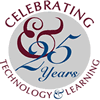PublicationsMining Movies - Technology and Learning Magazine |
||
 |
Photo Surfing in Blade RunnerThis month’s “Mining Movies” looks at Blade Runner, Ridley Scott’s film noir about the year 2019. It’s a sad time for earth, which is in the throes of environmental degradation so severe that other planets are being prepared for colonization. The main source of labor for this preparation work consists of “replicants,” organic robots that look and behave like humans, except for their inability to express real emotions. They have been banned from earth because they staged a revolt in one of the colonies. Enter Harrison Ford as Detective Rick Deckard. He is a “blade runner,” a cop who specializes in determining who is human and who is replicant. It is up to him to enforce the ban. Computer technology appears in Blade Runner as many futurists of today predict it will: invisibly. It is implied but rarely overtly shown, except for one particular piece of technology that Deckard uses to catch the bad guy – in this case a rogue replicant. The technology looks like a 1990’s TV-VCR combination unit and behaves like an extraordinarily powerful photo scanner that responds to voice commands. It’s nameless in the movie, so I call it a VAPED: Voice Activated Photo Extreme Detailer. Detective Deckard inserts a photo he has picked up at a crime scene into the VAPED and it appears on the screen superimposed on a grid, giving the photo the appearance of a map. To find clues hidden in the photo he talks to the VAPED, telling it to pan right, pan left, enlarge certain areas of the photo, and so on. He finally zeros in on one small area of the photo – a reflection in a mirror - that would be no larger than a few pixels by today’s standards and enlarges it exponentially without losing any resolution. Imagine the magnifying glass tool in PhotoShop on steroids, blowing up to 20000X without any pixilation, and you get the idea. No matter how closely he zooms in, the image on his screen is clear. The detail is unthinkable by today’s standards. But not by tomorrow’s. One day we will use “VAPEDs” in biology to allow students to see the micro world in stunning detail. Students will “surf” the photo using their own voices to navigate, moving from one element of the photo to another, cross referencing what they find as they build their own understanding of what they are looking at with the help of an integrated knowledge database. And once again parents and teachers will mutter to themselves “…sure wish we had this stuff when I was going to school…” |
|
© 2026 jason ohler |
||


